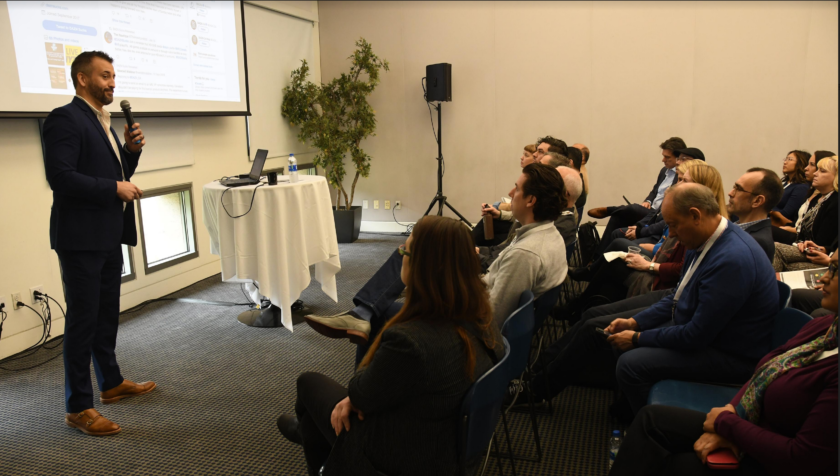M+E Connections

Smart Hollywood Summit: How to Avoid Fatal OTT Mistakes
Story Highlights
Negative user comments about over-the-top (OTT) video streaming services are rampant online and can be hard to recover from, but there are several critical considerations and steps that OTT service providers can take to avoid such issues, according to Jason Gish, president of film and TV at Burbank, Calif.-based quality assurance and testing company Testronic.
And it’s more important than ever to avoid OTT pitfalls because 2019 is such a pivotal year for the sector, with more OTT platform launches than ever before.
“Things are moving quickly and, especially in the OTT world, we have to be flexible,” Gish said Feb. 27 during the session “Your OTT Platform Sucks!” at the standing-room-only Smart Hollywood Summit. “The users drive the innovation and the requirements,” and the industry must “pay attention to that,” he told attendees.
“Those damn kids,” he joked, noting younger viewers tend to have “different expectations than we do.” They also “stream more than their elders” and tend to not view episodes of a TV series in the traditional one show a week system, he pointed out.
“We’re all aware of this trend: People are binge-watching more,” he said, adding: “They expect things to be ubiquitous and accessible everywhere and across any device and at any time and to meet whatever demands they want and, of course, high quality” is expected more now than it was a few years ago, when quality issues were often forgiven by viewers.
Sports fans, meanwhile, are willing to pay more to get more sports content on OTT services, he told attendees.
Although live sports are important to many viewers, he said, they also present a “unique challenge.” With live sports, “there’s no binging [and] there’s no catch-up TV; so, the expectation is it’s got to be great the first time and that’s it,” he said. And viewers don’t care why the service is bad, only that they can’t get what they want, he said.
Among the biggest issues that viewers have with OTT sports are availability of live sports content and latency, he pointed out. And it takes a while for OTT service providers to find problems and fix them, he noted. However, improvements have been made, he said, pointing as an example to the reduction of bitrates required to view content, so that viewers with lower bandwidth can still access the content and do so with reduced buffering.
Pointing to an example of how latency can destroy an OTT experience, he noted that if you’re watching a World Cup game at home and suddenly hear shouting from a bar down the street and then see a goal scored a few seconds later, “that’s frustrating” for viewers.
Now that a recent U.S. Supreme Court decision left it up to U.S. states to decide if they want to make sports betting legal, we can expect to see legal sports-related gambling in this country and that’s “going to be a real issue” if there’s latency problems, he also said.
On the problem of content availability, he pointed to an example in which viewers of a televised fight couldn’t see the title bout via OTT, just the undercard fights.
Other major issues include validation and verification problems. “Both things are totally critical,” Gish said.
Research has gloomily shown that 1 of every 5 people will leave an OTT platform if they can’t watch the content they want to see and/or had a bad experience — and the same number would never come back, he said. Viewers over 45 years old are the ones most likely to abandon a platform for those reasons, he added.
Citing steps that OTT service providers can take to avoid some of the typical and potentially service-killing issues, he told attendees: “Don’t rush to release. Take time to fix things and make sure you start testing early and then keep retesting until it’s right.”
Because of the fact that “this world changes so quickly … you need to be able to adopt and adapt as quickly as it changes — so, you should be prepared for that chaos constantly,” he said.
He also pointed to one more important area: “Obviously, automation is valuable. But how much of it and where to put it and then having the right people that can then interpret that data and do something with it” are the most important areas to consider with automation, he said.
This year’s Smart Hollywood Summit was produced by the Media & Entertainment Services Alliance’s Smart Content Council with sponsorship by IBM Watson, MarkLogic, EIDR, Hammerspace, human-I-T, Independent Security Evaluators (ISE), KlarisIP, Testronic, FilmTrack, OnPrem, Mediamorph, RSG Media, Vistex, Vubiquity and Bob Gold & Associates.
To download audio of the presentation, click here.









